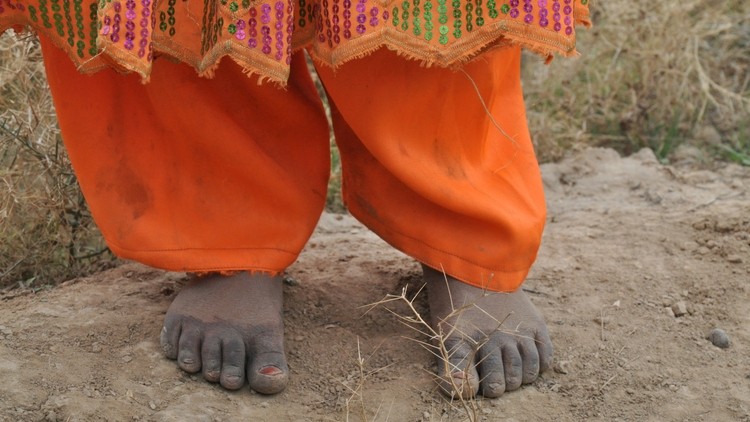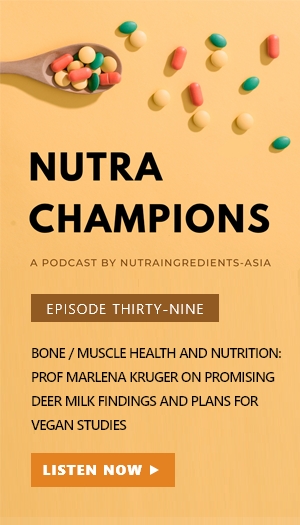Grave concern: Severe malnutrition rising in Afghan kids and mums – Kabul researchers

The country has one of the world’s highest stunting rates in children under five years old at 41% – predisposing them to diseases – and wasting caused by insufficient food supply.
The food insufficiency also results in acute malnutrition and poses an immediate threat to the children’s survival today, highlighted the dean for research and faculty member of the Department of Public Health under the Spinghar Institute of Higher Education (Kabul campus), Ahmad Mujtaba Barekzai.
He spoke to us around the first anniversary of the 2021 Taliban takeover in the country. The takeover followed the announcement by US President Joe Biden on a full withdrawal of the superpower’s troops by September 11, 2021, accompanied by NATO allies.
“We need to feed the future, and the future lies in Afghan children. We also need brain power, literally and figuratively, but good diet knowledge remains limited. Mothers are also malnourished. When mothers have inadequate diets, a harmful cycle is created – malnourished infants grow up to become stunted mothers, generation after generation. This is a cycle we must break.
“Due to rising insecurity and the COVID-19 pandemic too, there has been an increase in wasted children, and this situation remains a priority. Chronic nutritional deficiency in Afghanistan was largely due to the children having wrong diets and types of food, in addition to insufficient food.
“For example, only half the Afghan babies are exclusively breastfed in their first six months. Exposure to contaminated liquids or foods places them at a greater risk of life-threatening illnesses such as diarrhoea and pneumonia. Most do not have any fruit or vegetables on any given day,” said Ahmad, who is also the technical manager under the UN World Food Programme (WFP).
Afghanistan has a population of around 35m, with 70% aged under 25 and 5m under five. According to the UN, some 1.1m children under the age of five are likely to face the most severe form of malnutrition this year as increasing numbers of hungry, wasting-away children get hospitalised.
The number of children under five admitted into health facilities with severe malnutrition increased from 16,000 in March 2020 to 18,000 in March 2021 and then 28,000 in March 2022, reported the Afghan UNICEF representative Mohamed Ag Ayoya.
Demand for dietary diversity
Based on the statistics above, Ahmad said access to markets is crucial to ensure households can purchase diverse foods. However, the low availability of nutritious food in the market triggers higher prices and increased costs of a nutritious diet. Poor infrastructure also makes it challenging for consumers to access markets and producers to sell perishables. The poor dietary diversity is especially prominent in children aged six to 23 months.
According to Ahmad, the cost to produce nutritious meals for a seven-person household is estimated to be 284 Afghani (US$3.70) daily – three times more expensive than a diet that meets only energy needs at 88 Afghani or US$1.13. A nutritious diet is also more costly in rural areas at around 306 Afghani than in urban areas at 256 Afghani.
PhD candidate, lecturer and research assistant at the same institute, Sayed Tariq Pachakhan, said that Afghan children lack iron, retinol, calciferol, tocopherol, calcium, zinc, iodine and vitamin E. This malnourishment could potentially explain the spike in hospitalisation rates among kids under five from April 2022. They are at higher risk now than in 2020, he said.
He quoted the example of Mirwais Hospital in the Kandahar province (southern Afghanistan). A total of 1,100 children with malnutrition have been admitted within the past six months, but 30 died, said the head of the children’s ward, Dr Mohammad Sediq, as cited by Tariq.
“Reports from health agencies indicate that acute hunger has increased in Afghanistan, and many people have lost access to water, shelter and healthcare. 97% of families struggle to provide enough food for their children, and girls eat less than boys. Almost 80% of the children said they had gone to bed hungry in the past 30 days. Girls were also almost twice as likely as boys to frequently go hungry,” said Tariq.
Consequently, the food crisis has affected the girls’ mental well-being. Based on interviews with caregivers, 26% of the girls show signs of depression than 16% of the boys. 27% of girls also showed signs of anxiety compared to 18% of boys. Girls in focus groups said they had trouble sleeping at night because of worry and nightmares. Under the Taliban rule, they have also been excluded from many activities that previously made them happy, such as spending time with relatives and friends and going to parks and shops.
Suggested solutions
Hence, the two researchers suggest implementing targeted interventions, such as distributing micronutrient powder and specialised nutritious food. For example, the authorities or NGOs could provide iron folic acid, multiple micronutrient supplements or wheat-soy blends. They could also focus on babies in the NICUs and kids and adults in the ICUs, with specific attention given to food resistant to drugs.
They also said NGO food and nutrition expenditure has quadrupled, but asset distribution is imbalanced and improper across the country. They also tested the sunflower oils supplied by NGOs and found them unusable. The same goes for red beans and wheat brought in.
“The Taliban regime should conduct a cross-country survey to discover the rates of wasting, stunting, acute and chronic diseases, and anaemia. Work with academicians of various fields, from science to anthropology, to understand the results and provide specific food for each region as different areas consume different diets. Once these factors are controlled, the risk of disease will decrease,” said Ahmad.
Tariq added that the NGOs in the country need to up their game. He claimed the food trucks were used chiefly as “publicity stunts for photography”.
“Nutrition is a basic need in life, and it is shameful we don’t have a good diet in the 21st century. The immediate solution is to distribute food of better quality. Donate cash to the affected people so they can buy the food their families need,” he said.




















